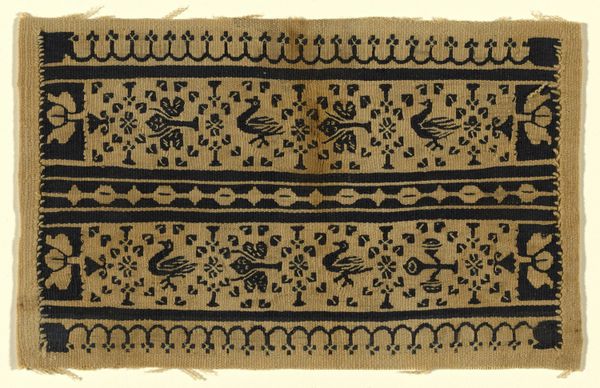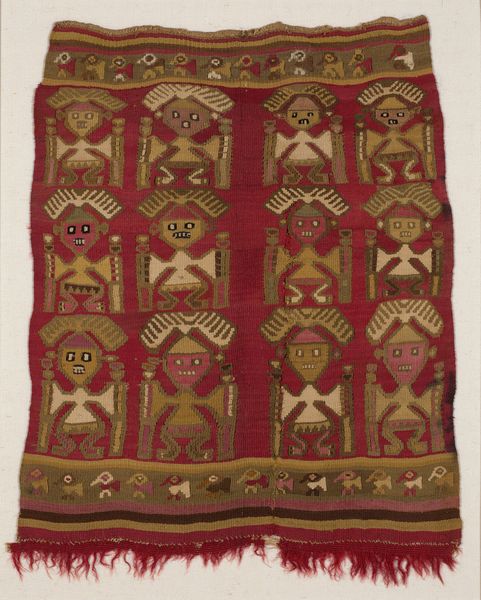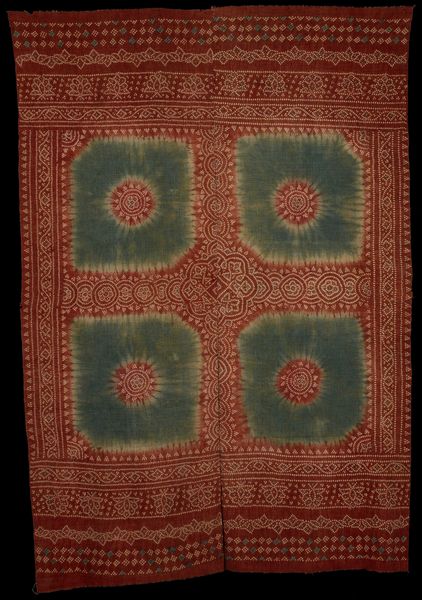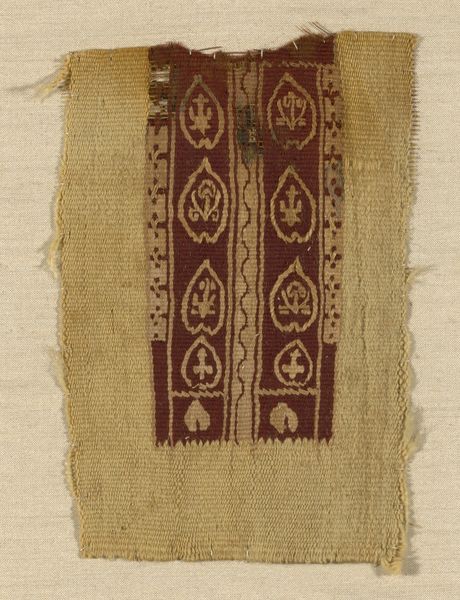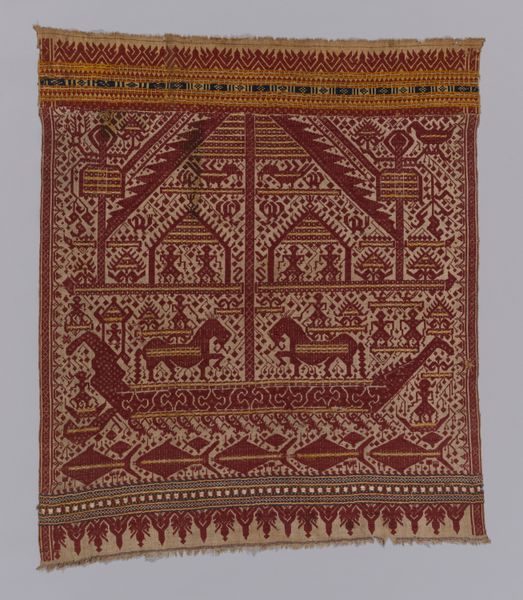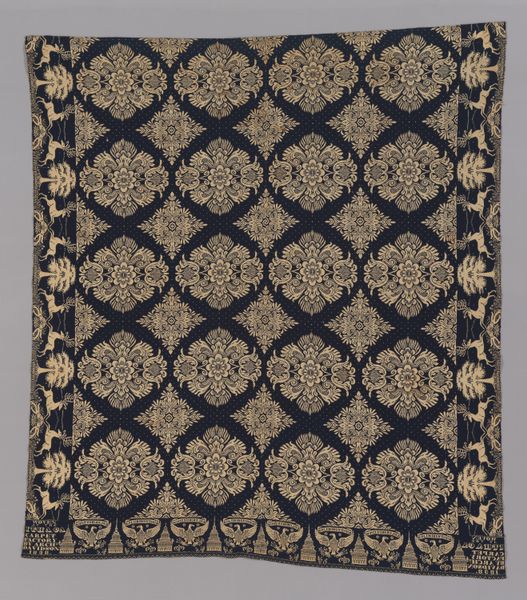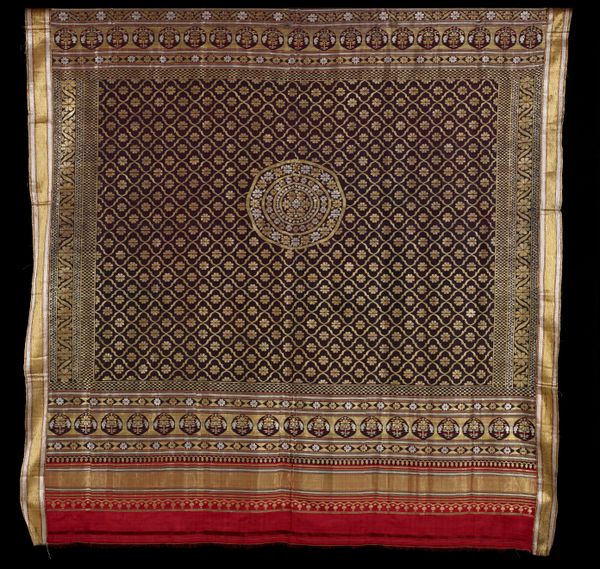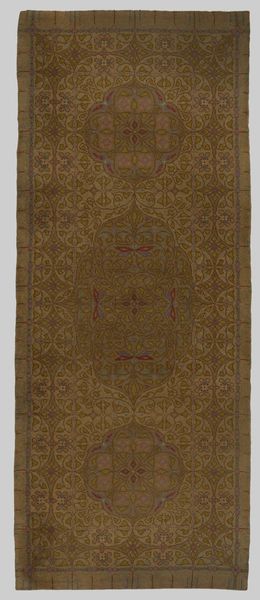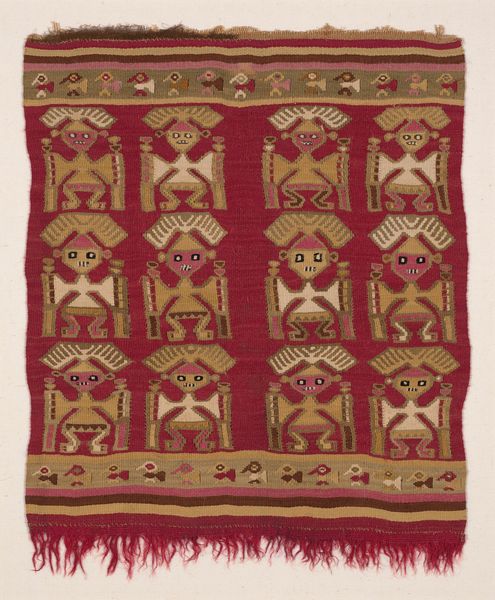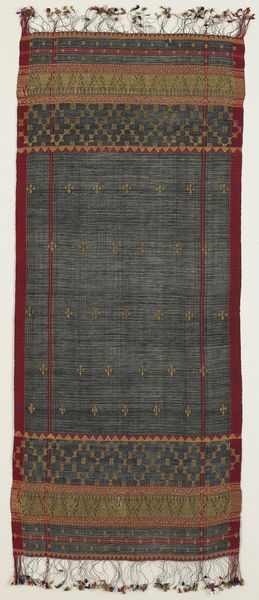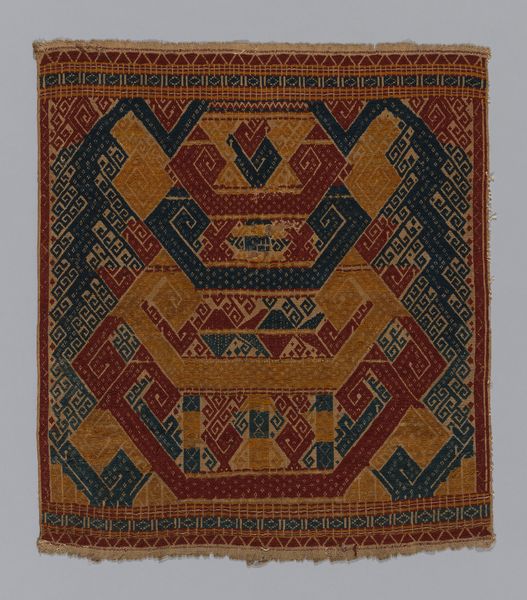
fibre-art, weaving, textile
#
natural stone pattern
#
fibre-art
#
weaving
#
textile
#
pattern design
#
repetitive shape and pattern
#
geometric
#
fabric design
#
repetition of pattern
#
regular pattern
#
pattern repetition
#
textile design
#
imprinted textile
#
layered pattern
Dimensions: 82.5 × 69.9 cm (32 1/2 × 27 1/2 in.)
Copyright: Public Domain
This tampan, or ceremonial cloth, of cotton was made by Paminggir people in Lampung, South Sumatra, Indonesia. These textiles were central to rites of passage marking stages in life, where the act of exchange is crucial. The tampan’s imagery is rooted in a world of ancestor worship, the spirit realm, and a deep connection to the natural world. The diamond patterned field, populated with images of ancestor ships, and loaded with stylized animals—elephants, birds, and mythical creatures—are not merely decorative. They are deeply symbolic, intended to bridge the terrestrial and spiritual realms, invoking protective forces. Consider the role of women in producing these textiles; weaving becomes an act of cultural preservation, an assertion of identity and status, as well as an economic endeavor. The tampan’s intricate designs, woven with deep cultural knowledge, become an act of silent communication, preserving and transmitting Lampungese values across generations. This tampan serves as a reminder of the intricate relationships between material culture, social structure, and spiritual beliefs.
Comments
No comments
Be the first to comment and join the conversation on the ultimate creative platform.
